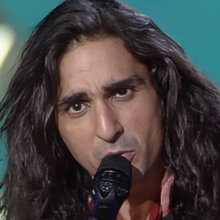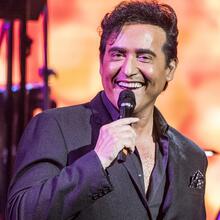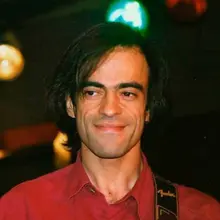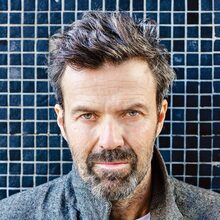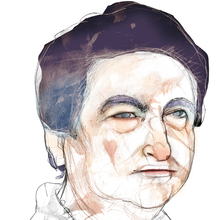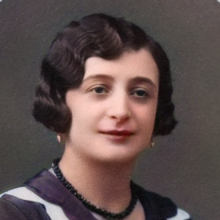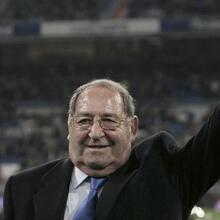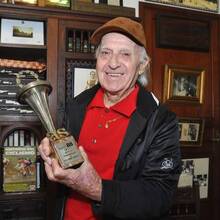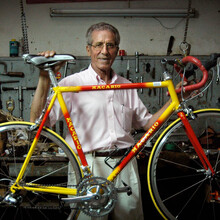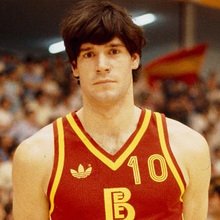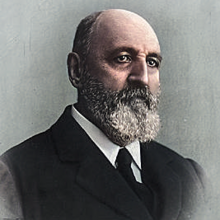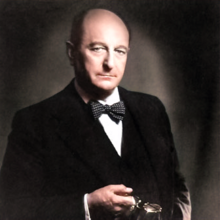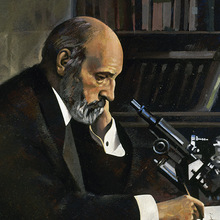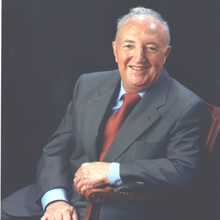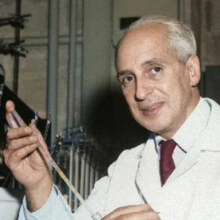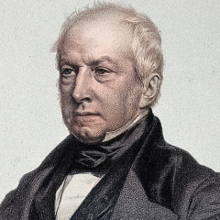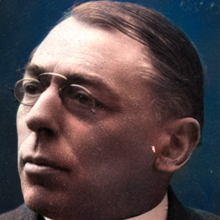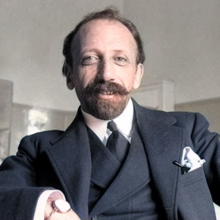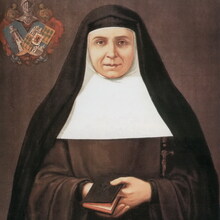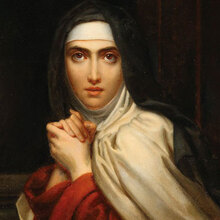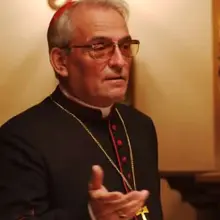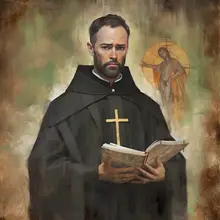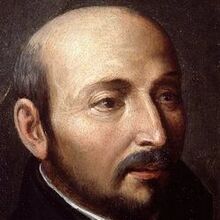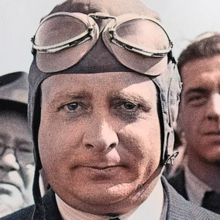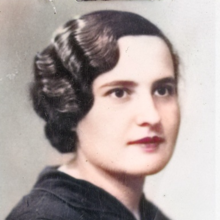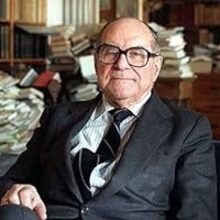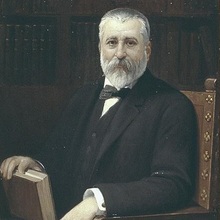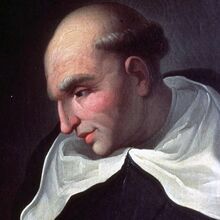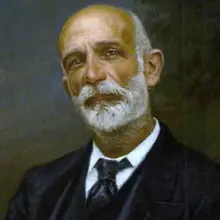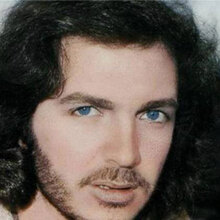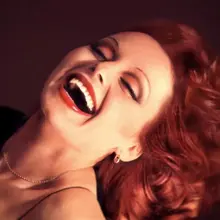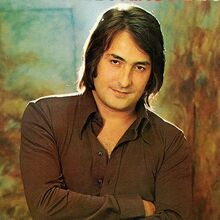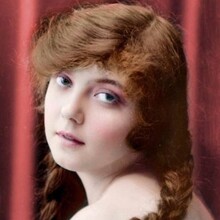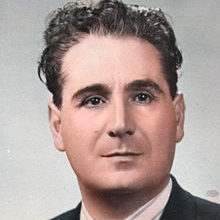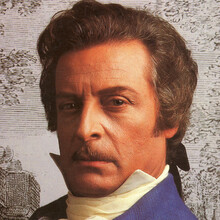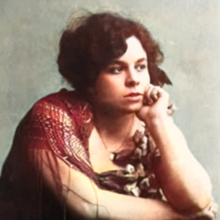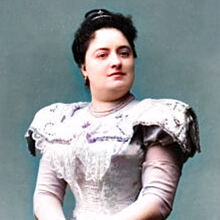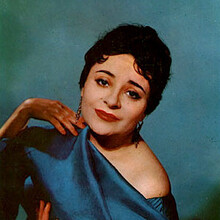 Basilio Martin Patino
1930 - 2017
Film director, documentary maker, screenwriter
Basilio Martin Patino
1930 - 2017
Film director, documentary maker, screenwriter
 Angel Nieto
1947 - 2017
Grand Prix motorcycle racer
Angel Nieto
1947 - 2017
Grand Prix motorcycle racer
 Estrellita Castro
1908 - 1983
Copla and flamenco singer and actress
Estrellita Castro
1908 - 1983
Copla and flamenco singer and actress
 Helena Cortesina
1903 - 1984
director, actor, producer, theatrical entrepreneur
Helena Cortesina
1903 - 1984
director, actor, producer, theatrical entrepreneur
 Vicente Enrique y Tarancon
1907 - 1994
Cardinal and Archbishop of Madrid
Vicente Enrique y Tarancon
1907 - 1994
Cardinal and Archbishop of Madrid
 Gregorio Maranon
1887 - 1960
Endocrinologist and essayist
Gregorio Maranon
1887 - 1960
Endocrinologist and essayist
 Vicente Aleixandre
1898 - 1984
winner of the Cervantes,and the Lenin Peace Prize
Vicente Aleixandre
1898 - 1984
winner of the Cervantes,and the Lenin Peace Prize
 Fernando Villaamil y Morillo
1845 - 1898
Spanish general and colonial administrator
Fernando Villaamil y Morillo
1845 - 1898
Spanish general and colonial administrator
 Bartolome de Las Casas
1484 - 1566
Dominican friar defender of indigenous people
Bartolome de Las Casas
1484 - 1566
Dominican friar defender of indigenous people
 Santiago Ramon Cajal
1852 - 1934
Father of modern neuroscience
Santiago Ramon Cajal
1852 - 1934
Father of modern neuroscience
 Blas de Lezo
1689 - 1741
naval officer and strategist
Blas de Lezo
1689 - 1741
naval officer and strategist
 Elbira Zipitria
1906 - 1982
Basque language teacher and activist
Elbira Zipitria
1906 - 1982
Basque language teacher and activist
 Ramon Maria del Valle-Inclan
1866 - 1936
Writer and dramatist of the Spanish Modernism
Ramon Maria del Valle-Inclan
1866 - 1936
Writer and dramatist of the Spanish Modernism
 Seve Ballesteros
1957 - 2011
Professional golfer and Ryder Cup captain
Seve Ballesteros
1957 - 2011
Professional golfer and Ryder Cup captain
 Manuel de Falla
1876 - 1946
Composer, pianist, conductor
Manuel de Falla
1876 - 1946
Composer, pianist, conductor
 Andres Segovia
1893 - 1987
Classical guitarist and virtuoso
Andres Segovia
1893 - 1987
Classical guitarist and virtuoso
 Pedro Orrente
1580 - 1645
Painter of the early Baroque period
Pedro Orrente
1580 - 1645
Painter of the early Baroque period
 Garcilaso de la Vega
1562 - 1635
Playwright and poet of the Spanish Golden Age
Garcilaso de la Vega
1562 - 1635
Playwright and poet of the Spanish Golden Age
 Juan Fernandez Navarrete
1526 - 1579
Painter of the Spanish Mannerist school
Juan Fernandez Navarrete
1526 - 1579
Painter of the Spanish Mannerist school
 Juan Antonio Bardem
1922 - 2002
Film director and screenwriter
Juan Antonio Bardem
1922 - 2002
Film director and screenwriter
 Vicente Riva Palacio
1832 - 1896
Writer, politician, military leader
Vicente Riva Palacio
1832 - 1896
Writer, politician, military leader
 Salvador de Madariaga
1886 - 1978
Spanish writer, diplomat, and historian
Salvador de Madariaga
1886 - 1978
Spanish writer, diplomat, and historian
 Manuel Azana
1880 - 1940
Minister of War, Prime Minister
Manuel Azana
1880 - 1940
Minister of War, Prime Minister
 Margarita Salas
1938 - 2019
Biochemistry and molecular genetics
Margarita Salas
1938 - 2019
Biochemistry and molecular genetics
 Montserrat Caballe
1933 - 2018
Opera singer
Montserrat Caballe
1933 - 2018
Opera singer
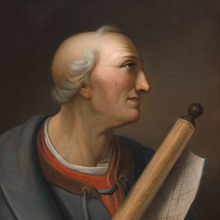 Amerigo Vespucci
1451 - 1512
Explorer
Amerigo Vespucci
1451 - 1512
Explorer
 Antoni Gaudi
1852 - 1926
Architect and pioneer of Modernism
Antoni Gaudi
1852 - 1926
Architect and pioneer of Modernism
 Rocio Orsi Portalo
1976 - 2014
Philosopher, essayist, and translator
Rocio Orsi Portalo
1976 - 2014
Philosopher, essayist, and translator
 Rafael Alberti
1902 - 1999
Poet, writer, painter, member of the Generation
Rafael Alberti
1902 - 1999
Poet, writer, painter, member of the Generation
 Mathieu Joseph Bonaventure Orfila
1787 - 1853
Founder of toxicology
Mathieu Joseph Bonaventure Orfila
1787 - 1853
Founder of toxicology
 Gustavo Adolfo Becquer
1836 - 1870
Poet, writer, journalist,author of Rimas Leyendas
Gustavo Adolfo Becquer
1836 - 1870
Poet, writer, journalist,author of Rimas Leyendas
 Francisco Tarrega
1852 - 1909
Classical guitar composer and performer
Francisco Tarrega
1852 - 1909
Classical guitar composer and performer
 Bert Trautmann
1923 - 2013
Footballer for Manchester City
Bert Trautmann
1923 - 2013
Footballer for Manchester City
 Paul Naschy
1934 - 2009
Actor and director of horror films
Paul Naschy
1934 - 2009
Actor and director of horror films
 Maria Gay Zenatello
1879 - 1943
Opera singer and actress
Maria Gay Zenatello
1879 - 1943
Opera singer and actress
 Maria Zambrano
1904 - 1991
Philosopher and essayist of the Generation of '36
Maria Zambrano
1904 - 1991
Philosopher and essayist of the Generation of '36
 Jose Echegaray
1832 - 1916
dramatist, civil engineer and statesman
Jose Echegaray
1832 - 1916
dramatist, civil engineer and statesman
 Alicia de Larrocha
1923 - 2009
pianist and composer
Alicia de Larrocha
1923 - 2009
pianist and composer
 Avelina Carrera
1871 - 1939
Opera singer
Avelina Carrera
1871 - 1939
Opera singer
 Alfredo Torero
1930 - 2004
anthropologist, linguist
Alfredo Torero
1930 - 2004
anthropologist, linguist
 Demola Seriki
1959 - 2022
Nigerian ambassador to Spain
Demola Seriki
1959 - 2022
Nigerian ambassador to Spain
 Pablo Gargallo
1881 - 1934
Sculptor and painter
Pablo Gargallo
1881 - 1934
Sculptor and painter
 Bartolomeu de Gusmao
1685 - 1724
Priest and inventor
Bartolomeu de Gusmao
1685 - 1724
Priest and inventor
 Pau Dones
1966 - 2020
Jarabe de Palo vocalist
Pau Dones
1966 - 2020
Jarabe de Palo vocalist
 Joan Oro
1923 - 2004
Biochemist and astrobiologist
Joan Oro
1923 - 2004
Biochemist and astrobiologist
 Concepcion Arenal
1820 - 1893
Writer, jurist, thinker, journalist, poet
Concepcion Arenal
1820 - 1893
Writer, jurist, thinker, journalist, poet
 John David McAfee
1945 - 2021
Computer programmer
John David McAfee
1945 - 2021
Computer programmer
 Santiago Carrillo
1915 - 2012
Secretary-general of the Communist Party of Spain
Santiago Carrillo
1915 - 2012
Secretary-general of the Communist Party of Spain
 Segundo de Chomon
1871 - 1929
Film director, cinematographer, screenwriter
Segundo de Chomon
1871 - 1929
Film director, cinematographer, screenwriter
 Joaquina Vedruna de Mas
1783 - 1854
Founder of the Carmelite Sisters of Charity
Joaquina Vedruna de Mas
1783 - 1854
Founder of the Carmelite Sisters of Charity
 Leonardo Alenza
1807 - 1845
Painter and engraver in the Romantic style
Leonardo Alenza
1807 - 1845
Painter and engraver in the Romantic style
 Pedro Carrasco
1943 - 2001
Professional boxer and WBC lightweight champion
Pedro Carrasco
1943 - 2001
Professional boxer and WBC lightweight champion
 Francisco Gento
1933 - 2022
Footballer
Francisco Gento
1933 - 2022
Footballer
 Jose Saramago
1922 - 2010
Writer and Nobel laureate
Jose Saramago
1922 - 2010
Writer and Nobel laureate
 Maria Teresa Oller
1920 - 2018
composer and folklorist of the Valencian Community
Maria Teresa Oller
1920 - 2018
composer and folklorist of the Valencian Community
 Necla Hibetullah Sultan
1926 - 2006
Ottoman and Egyptian royalty
Necla Hibetullah Sultan
1926 - 2006
Ottoman and Egyptian royalty
 Ignatius of Loyola
1491 - 1556
Founder of the Society of Jesus
Ignatius of Loyola
1491 - 1556
Founder of the Society of Jesus
 Vasco Nunez de Balboa
1475 - 1519
Explorer and governor of Panama
Vasco Nunez de Balboa
1475 - 1519
Explorer and governor of Panama
 Francisco Vinas
1863 - 1933
Operatic tenor
Francisco Vinas
1863 - 1933
Operatic tenor
 Pio Baroja
1872 - 1956
Writer, novelist, biographer, physician
Pio Baroja
1872 - 1956
Writer, novelist, biographer, physician
 Hipolito Lazaro
1887 - 1974
Opera singer
Hipolito Lazaro
1887 - 1974
Opera singer
 Horatio Nelson
1758 - 1805
Naval commander
Horatio Nelson
1758 - 1805
Naval commander
 Maria Josefa Cerrato Rodriguez
1897 - 1981
Veterinarian, professor and pharmacist
Maria Josefa Cerrato Rodriguez
1897 - 1981
Veterinarian, professor and pharmacist
 Esteban Terradas i Illa
1883 - 1950
Mathematician, physicist and engineer
Esteban Terradas i Illa
1883 - 1950
Mathematician, physicist and engineer
 Francisco Goya
1746 - 1828
Painter and printmaker
Francisco Goya
1746 - 1828
Painter and printmaker
 Bigas Luna
1946 - 2013
Film director, designer and artist
Bigas Luna
1946 - 2013
Film director, designer and artist
 Camilo Sesto
1946 - 2019
Singer, songwriter,music producer of romantic pop
Camilo Sesto
1946 - 2019
Singer, songwriter,music producer of romantic pop
 Federico Martin Bahamontes
1928 - 2023
Road racing cyclist
Federico Martin Bahamontes
1928 - 2023
Road racing cyclist
 Esther Tusquets
1936 - 2012
Writer and publisher of the Spanish Modernism
Esther Tusquets
1936 - 2012
Writer and publisher of the Spanish Modernism
 Francisco de Zurbaran
1598 - 1664
Landscape painter with figures
Francisco de Zurbaran
1598 - 1664
Landscape painter with figures
 Santiago Rusinol
1861 - 1931
Painter, poet, journalist, collector ,playwright
Santiago Rusinol
1861 - 1931
Painter, poet, journalist, collector ,playwright
 Gonzalo Fernandez de Cordoba
1453 - 1515
Military leader in the Conquest of Granada
Gonzalo Fernandez de Cordoba
1453 - 1515
Military leader in the Conquest of Granada
 Severo Ochoa
1905 - 1993
Biochemist and molecular biologist
Severo Ochoa
1905 - 1993
Biochemist and molecular biologist
 Juan Pujol Garcia
1912 - 1988
Double agent loyal to Great Britain against Nazi
Juan Pujol Garcia
1912 - 1988
Double agent loyal to Great Britain against Nazi
 Vintila Horia
1915 - 1992
Writer
Vintila Horia
1915 - 1992
Writer
 Antonio Buero Vallejo
1916 - 2000
Playwright, jurist, thinker, journalist, poet
Antonio Buero Vallejo
1916 - 2000
Playwright, jurist, thinker, journalist, poet
 El Greco
1541 - 1614
Painter and architect of the Spanish Renaissance
El Greco
1541 - 1614
Painter and architect of the Spanish Renaissance
 Hernando de Soto
1496 - 1542
Explorer and conquistador of Central America
Hernando de Soto
1496 - 1542
Explorer and conquistador of Central America
 Andres Manuel del Rio
1764 - 1849
Discoverer of vanadium
Andres Manuel del Rio
1764 - 1849
Discoverer of vanadium
 Enrique Urquijo
1960 - 1999
Singer, songwriter, and guitarist
Enrique Urquijo
1960 - 1999
Singer, songwriter, and guitarist
 Maria Blanchard
1881 - 1932
Painter and pioneer of Cubism
Maria Blanchard
1881 - 1932
Painter and pioneer of Cubism
 Ignacio Barraquer Barraquer
1884 - 1965
Ophthalmologist
Ignacio Barraquer Barraquer
1884 - 1965
Ophthalmologist
 Concha Espina
1869 - 1955
Novelist and poet
Concha Espina
1869 - 1955
Novelist and poet
 Salvador Dali
1904 - 1989
Painter and pioneer of Surrealism
Salvador Dali
1904 - 1989
Painter and pioneer of Surrealism
 Angelines Fernandez
1924 - 1994
Actress and comedian
Angelines Fernandez
1924 - 1994
Actress and comedian
 Angela Ruiz Robles
1895 - 1975
Inventor of the mechanical precursor
Angela Ruiz Robles
1895 - 1975
Inventor of the mechanical precursor
 Iosif Constantin Dragan
1917 - 2008
Businessman, Historian
Iosif Constantin Dragan
1917 - 2008
Businessman, Historian
 Josefina de la Torre
1907 - 2002
Poet, novelist, opera singer, and actress
Josefina de la Torre
1907 - 2002
Poet, novelist, opera singer, and actress
 Teresa Berganza
1933 - 2022
Mezzo-soprano opera singer and teacher
Teresa Berganza
1933 - 2022
Mezzo-soprano opera singer and teacher
 Gloria Fuertes
1917 - 1998
Novelist and poet
Gloria Fuertes
1917 - 1998
Novelist and poet
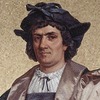 Christopher Columbus
1541 - 1506
Explorer
Christopher Columbus
1541 - 1506
Explorer
 Don Raimundo
1090 - 1152
Archbishop of Toledo and patron of the Toledan
Don Raimundo
1090 - 1152
Archbishop of Toledo and patron of the Toledan
 Leopoldo Calvo-Sotelo
1926 - 2008
Prime Minister of Spain, Minister of Economy
Leopoldo Calvo-Sotelo
1926 - 2008
Prime Minister of Spain, Minister of Economy
 Maruja Mallo
1902 - 1995
Painter
Maruja Mallo
1902 - 1995
Painter
 Juan Marse
1933 - 2020
Novelist, journalist and screenwriter
Juan Marse
1933 - 2020
Novelist, journalist and screenwriter
 Baltasar Gracian
1601 - 1658
Baroque prose writer and philosopher
Baltasar Gracian
1601 - 1658
Baroque prose writer and philosopher
 Juan Martin Diez
1775 - 1825
Guerrilla leader and military general
Juan Martin Diez
1775 - 1825
Guerrilla leader and military general
 Laurence Olivier
1907 - 1989
Actor and director
Laurence Olivier
1907 - 1989
Actor and director
 Diego de los Rios
1850 - 1911
Last Spanish Governor-General of the Philippines
Diego de los Rios
1850 - 1911
Last Spanish Governor-General of the Philippines
 Clara Campoamor
1888 - 1972
Politician, lawyer, writer, journalist, feminist
Clara Campoamor
1888 - 1972
Politician, lawyer, writer, journalist, feminist
 Joe Lynch
1926 - 2001
Actor and singer
Joe Lynch
1926 - 2001
Actor and singer
 Victoria de los Angeles
1923 - 2005
Operatic lyric soprano and recitalist
Victoria de los Angeles
1923 - 2005
Operatic lyric soprano and recitalist
 Ana Mariscal
1923 - 1995
Actress, director, screenwriter and producer
Ana Mariscal
1923 - 1995
Actress, director, screenwriter and producer
 Maria Dolores Pradera
1924 - 2018
Spanish melodic singer and actress
Maria Dolores Pradera
1924 - 2018
Spanish melodic singer and actress
 Guillermo Timoner
1926 - 2023
Professional cyclist
Guillermo Timoner
1926 - 2023
Professional cyclist
 Jose Antonio Primo de Rivera
1903 - 1936
Founder and leader of Falange Española
Jose Antonio Primo de Rivera
1903 - 1936
Founder and leader of Falange Española
 Eugenia Osterberger
1852 - 1932
Composer and pianist
Eugenia Osterberger
1852 - 1932
Composer and pianist
 Caravaggio
1571 - 1610
Painter
Caravaggio
1571 - 1610
Painter
 Sara Montiel
1928 - 2013
Actress and singer of Spanish cinema
Sara Montiel
1928 - 2013
Actress and singer of Spanish cinema
 Manuel Santana
1938 - 2021
Tennis player
Manuel Santana
1938 - 2021
Tennis player
 Fernando Martin Espina
1962 - 1989
Basketball player
Fernando Martin Espina
1962 - 1989
Basketball player
 Juan Ramon Jimenez
1881 - 1958
Poet and Nobel Prize winner
Juan Ramon Jimenez
1881 - 1958
Poet and Nobel Prize winner
 Bartolome Esteban Murillo
1617 - 1682
Painter of the Spanish Baroque school
Bartolome Esteban Murillo
1617 - 1682
Painter of the Spanish Baroque school
 Eduardo Rosales
1836 - 1873
Painter of the early Baroque period
Eduardo Rosales
1836 - 1873
Painter of the early Baroque period
 Maria de la O Lejarraga
1874 - 1974
Writer, dramatist, translator and politician
Maria de la O Lejarraga
1874 - 1974
Writer, dramatist, translator and politician
 Jose Luis Saenz de Heredia
1911 - 1992
Film director, documentary maker, producer, actor
Jose Luis Saenz de Heredia
1911 - 1992
Film director, documentary maker, producer, actor
 Luis Ocana
1945 - 1994
Road bicycle racer
Luis Ocana
1945 - 1994
Road bicycle racer
 Rocio Jurado
1944 - 2006
Singer and actress of copla, flamenco
Rocio Jurado
1944 - 2006
Singer and actress of copla, flamenco
 Hernan Cortes
1485 - 1547
Spanish conquistador
Hernan Cortes
1485 - 1547
Spanish conquistador
 Santiago Ramon y Cajal
1852 - 1934
Neuroscience, neuroanatomy, histology
Santiago Ramon y Cajal
1852 - 1934
Neuroscience, neuroanatomy, histology
 Julian Marias
1914 - 2005
Philosopher, writer, professor and essayist
Julian Marias
1914 - 2005
Philosopher, writer, professor and essayist
 Rocio Durcal
1944 - 2006
Singer actress of canción melódica ranchera genres
Rocio Durcal
1944 - 2006
Singer actress of canción melódica ranchera genres
 Lluis Rigalt
1814 - 1894
Painter of the Spanish Mannerist school
Lluis Rigalt
1814 - 1894
Painter of the Spanish Mannerist school
 Alfredo Kraus
1927 - 1999
Opera singer, especially in bel canto roles
Alfredo Kraus
1927 - 1999
Opera singer, especially in bel canto roles
 John of Avila
1499 - 1569
Reformer, preacher, author, spiritual director
John of Avila
1499 - 1569
Reformer, preacher, author, spiritual director
 Ivan Zulueta
1943 - 2009
Film director, designer, screenwriter, actor
Ivan Zulueta
1943 - 2009
Film director, designer, screenwriter, actor
 Francisco Franco
1892 - 1975
Leader of the Nationalist forces
Francisco Franco
1892 - 1975
Leader of the Nationalist forces
 Fernando Rey
1917 - 1994
Actor
Fernando Rey
1917 - 1994
Actor
 Jose Celestino Bruno Mutis
1732 - 1808
Botanist, mathematician, priest, artist
Jose Celestino Bruno Mutis
1732 - 1808
Botanist, mathematician, priest, artist
 Francisco Giner de los Rios
1839 - 1915
Philosopher, literary critic
Francisco Giner de los Rios
1839 - 1915
Philosopher, literary critic
 Casto Mendez Nunez
1824 - 1869
Naval officer and admiral
Casto Mendez Nunez
1824 - 1869
Naval officer and admiral
 Leonardo Torres Quevedo
1852 - 1936
Mathematician, physicist and engineer
Leonardo Torres Quevedo
1852 - 1936
Mathematician, physicist and engineer
 Mario Camus
1935 - 2021
Film director and screenwriter
Mario Camus
1935 - 2021
Film director and screenwriter
 Joaquin Turina
1882 - 1949
Classical music composer and performer
Joaquin Turina
1882 - 1949
Classical music composer and performer
 Eugenio Montero Rios
1832 - 1914
Prime minister of Spain, minister of Grace
Eugenio Montero Rios
1832 - 1914
Prime minister of Spain, minister of Grace
 Nino Bravo
1944 - 1973
Baroque pop and ballad singer
Nino Bravo
1944 - 1973
Baroque pop and ballad singer
 Lina Morgan
1937 - 2015
Comedy actress and theater owner
Lina Morgan
1937 - 2015
Comedy actress and theater owner
 Francisco Javier Castanos Aragorri
1758 - 1852
Military commander and politician
Francisco Javier Castanos Aragorri
1758 - 1852
Military commander and politician
 Carlos Marin
1968 - 2021
Singer and member of Il Divo
Carlos Marin
1968 - 2021
Singer and member of Il Divo
 Pilar Bardem
1939 - 2021
Actress and activist
Pilar Bardem
1939 - 2021
Actress and activist
 Joana Sainz Garcia
1989 - 2019
Super Hollywood Orchestra member
Joana Sainz Garcia
1989 - 2019
Super Hollywood Orchestra member
 Jenaro Perez Villaamil
1807 - 1854
Landscape painter with figures
Jenaro Perez Villaamil
1807 - 1854
Landscape painter with figures
 Abu Abdullah Muhammad Al-Azdi
-970 - -1043
Physician and Physicist
Abu Abdullah Muhammad Al-Azdi
-970 - -1043
Physician and Physicist
 Amparo Baro
1937 - 2015
Actress
Amparo Baro
1937 - 2015
Actress
 Antonio Flores
1961 - 1995
Singer, songwriter, and actor
Antonio Flores
1961 - 1995
Singer, songwriter, and actor
 Luis Bunuel
1900 - 1983
Film director and screenwriter
Luis Bunuel
1900 - 1983
Film director and screenwriter
 Nico
1938 - 1988
Singer, songwriter, actress and model
Nico
1938 - 1988
Singer, songwriter, actress and model
 Federica Montseny
1905 - 1994
Anarchist leader, novelist,writer on social issues
Federica Montseny
1905 - 1994
Anarchist leader, novelist,writer on social issues
 Antoine Perrenot de Granvelle
1517 - 1586
Minister of the Spanish Habsburgs
Antoine Perrenot de Granvelle
1517 - 1586
Minister of the Spanish Habsburgs
 Eugenio Lucas Velazquez
1817 - 1870
Romantic painter
Eugenio Lucas Velazquez
1817 - 1870
Romantic painter
We Need -- admin in

